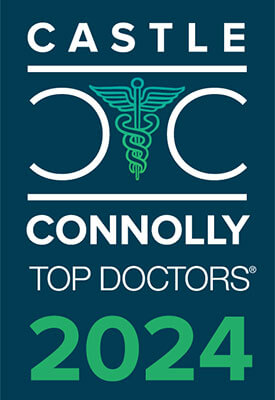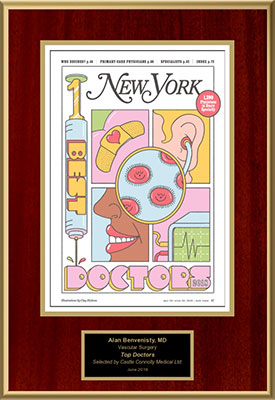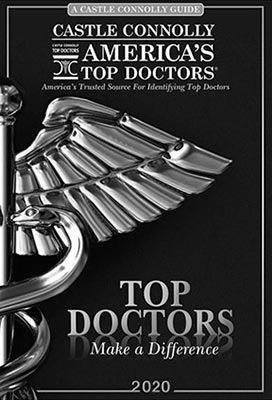Kidney and Intestinal Artery Disease
When plaque accumulates on the inside walls of arteries in any area of the body, the arteries begin to narrow, and the flow of blood is inhibited. When narrowing (stenosis) of the arteries that supply blood to the intestines and kidneys occurs, these organs receive less oxygen and nutrients. Specifically, the arteries that supply blood to the kidneys are the renal arteries. In turn, the arteries that supply blood to the intestines are called mesenteric arteries. Narrowing of the renal or mesenteric arteries results in kidney and intestinal artery disease.
While risk factors contributing to kidney conditions and intestinal artery disease include atherosclerosis (hardening of the arteries), hypertension (high blood pressure), high cholesterol, tobacco use, diabetes and aging. Overgrown tissue within the renal arteries (fibromuscular dysplasia) can also cause kidney disease by blocking the blood flow. It’s important to understand that atherosclerosis can run in families and fibromuscular dysplasia is a genetic defect.
Where certain factors are pre-determined, such as family history and genetics, individuals suffering from high blood pressure as well as unexplained weight loss and extreme stomach pain when eating, should contact their physician for a checkup. These are symptoms associated with kidney and intestinal artery disease.
Dr. Alan Benvenisty is a renowned general, vascular and endovascular surgeon in New York City with a super specialty in kidney and renal disease, including limb bypass surgery and renal transplant surgery. If you believe that you are at risk for developing kidney or intestinal artery disease, or if you are experiencing any of the symptoms mentioned above, Dr. Benvenisty welcomes your call today at his office on Amsterdam Avenue.

Kidney and Intestinal Artery Disease Treatment Options
When patients are diagnosed with kidney and intestinal artery disease, immediate intervention is necessary to restore the flow of blood and protect organs from tissue damage. Depending on the extent or progression of the disease, vascular surgeons may opt to perform a minimally invasive procedure such as angioplasty (balloon) and stenting or an open surgical procedure. Both are explained below:
- Angioplasty (balloon) stenting:
- Involves inserting and threading a tiny balloon into the blocked artery where it inflates and opens the artery, restoring blood flow. The wax-like plaque is pushed against the walls of the artery as the balloon inflates, and a metal or synthetic stent is placed inside the blood vessel to stabilize and keep the vessel open.
- Arterial bypass surgery:
- As an open surgical procedure, a grafted blood vessel (may be a healthy vein or artery or a synthetic graft) is used to redirect blood, “bypassing” the damaged or blocked blood vessel.
When it comes to treatment options and determining which is appropriate, Dr. Alan Benvenisty commits to his philosophy of treating patients as individuals. With extensive experience as a general, vascular and endovascular surgeon in New York City and his affiliation with Mount Sinai Hospital, Dr. Benvenisty remains at the forefront of the treatment of kidney disease. He understands that tailored treatment is necessary to provide the best outcome for each patient. To speak with Dr. Benvenisty, contact our office on Amsterdam Avenue today.







